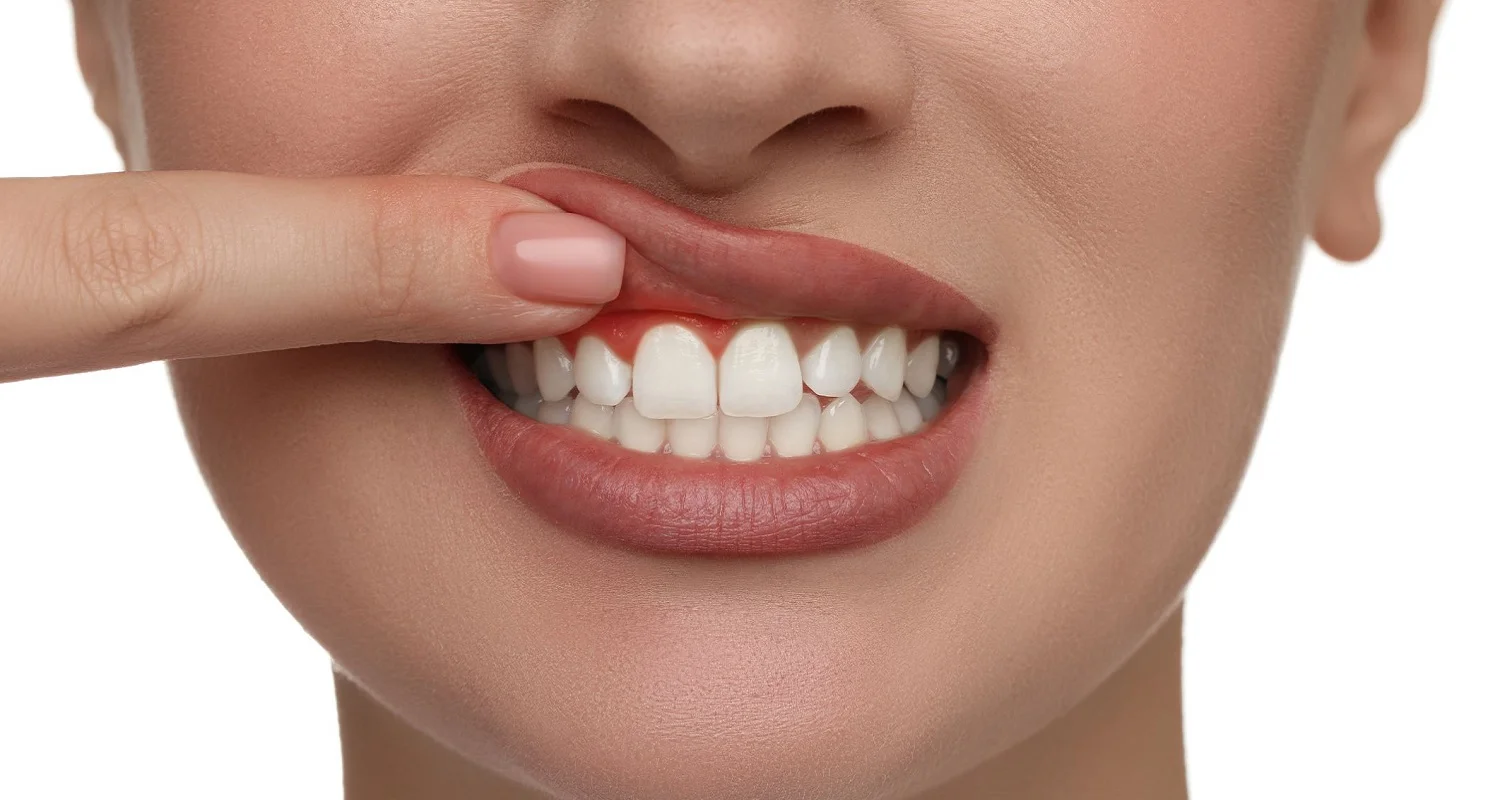Last Updated on: 7th June 2024, 07:46 am
✓ Fact Checked 🕓
❙ Our team of writers, editors, and medical experts rigorously evaluates each article to ensure the information is accurate and exclusively cites reputable sources.
❙ We regularly assess how the content in this article aligns with current scientific literature and expert recommendations in order to provide the most up-to-date research.
When talking about oral health, gums are rarely the protagonists. Although the gums are not often given enough attention, they play an indispensable role in the health and aesthetics of your smile. Having gum recession can cause discomfort, tooth sensitivity, and cosmetic problems. In this article, we tell you how to cure receding gums.
How to Cure Receding Gums
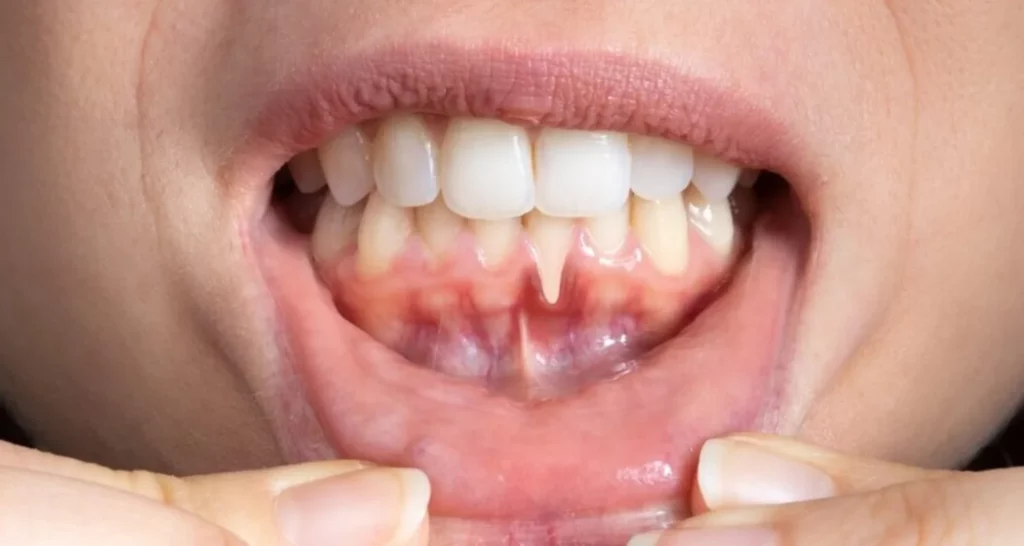
What are receding gums?
The gums cover the tooth roots and the bone that supports them. When gingival retractions or recession occur, the gums gradually recede, exposing the tooth roots and causing an uneven gum line. Because this portion of the tooth roots is normally covered and protected by the gums, when there are receding gums, sensitivity to hot or cold drinks usually occurs, in addition to aesthetic problems.
What causes receding gums?
Receding gums can be caused by various causes:
● Genetic factors.
● Poor hygiene.
● Periodontal disease.
● Over-inserted labial frenulums.
● Harmful habits.
Oral habits that can contribute to Gum recession treatment
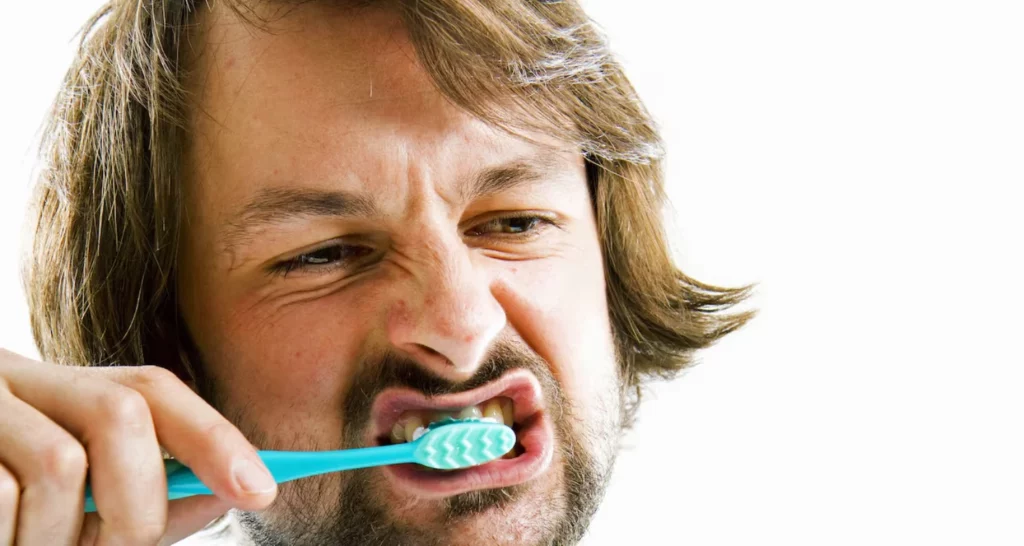
1. Incorrect brushing and aggressive flossing
The problem: While maintaining good oral hygiene is crucial, certain factors can lead to receding gums, including:
● Brushing excessively.
● Brush your teeth horizontally (back and forth).
● Using too much force when flossing.
● Use stiff bristles.
To do? The following tips could help you improve your tooth brushing technique:
● Brush your teeth 3 times a day.
● Prefers soft bristle brushes.
● Brush your teeth gently in a circular motion.
● Use moderate force, gripping the toothbrush from the end.
● When flossing, respect the triangle of gum that is between tooth and tooth, sliding it gently over the surface of each of the teeth.
2. Smoking and consuming tobacco
The problem: Smoking and tobacco use decrease blood flow to the gums, making them more susceptible to infection. Additionally, tobacco products contain harmful chemicals that can erode gum tissue.
To do? Quitting smoking and tobacco is one of the best decisions you can make for your oral and general health. Your body and your gums will thank you.
3. Use of oral piercings
The problem: A review of various studies conducted up to 2023 showed that lip piercings can rub against the gums and cause gingival recessions.
To do? Avoid piercings in the mouth, you can place them in another part of the body where they do not generate unwanted effects.
How to cure receding gums?
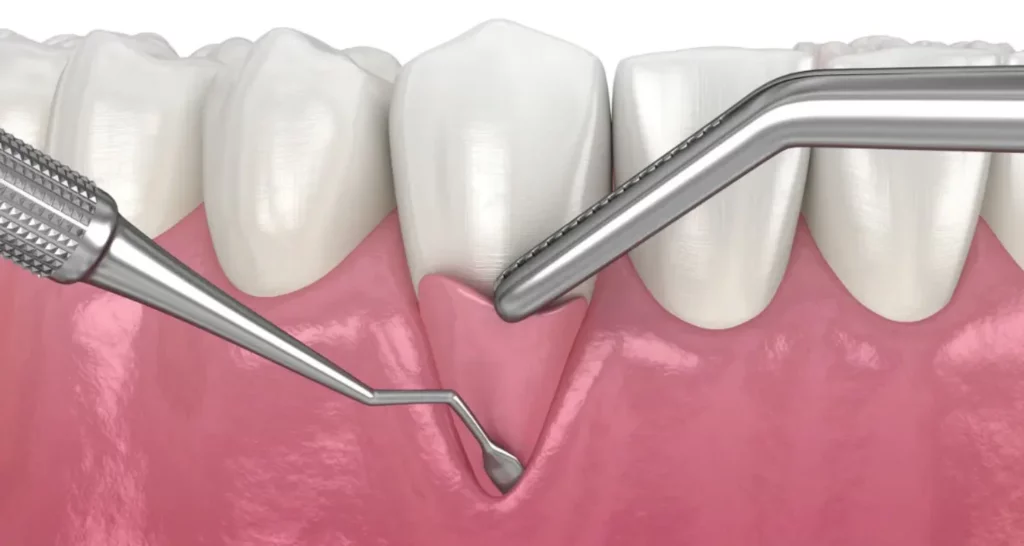
We have already talked about the causes and habits that contribute to receding gums. But you are probably wondering about how to cure receding gums? Is it possible to Gum recession treatment? Are there natural remedies for receding gums? Below is the answer to these and many other questions:
Can Gum recession treatment?
Curing gingival recessions is difficult, since the lost tissue does not grow back. However, actions can be taken to prevent the retractions from continuing to advance or perform treatments to cover the roots with gum again. In early stages, its treatment is much simpler, so it is important to be attentive to the changes that may occur. Although there are procedures to correct this condition, it is much easier to prevent than to cure them.
How to cure gum recession?
Although science has advanced a lot in recent years, it is still not possible to promote gum growth after gingival recession has occurred. The good news is that there are surgical treatments that allow the placement of a gum graft to cover the affected area. This procedure is performed by a dentist specializing in periodontics. Under local anesthesia, a small incision is made in another area of the mouth to remove a portion of the gum and fix it in the area of recession.
Are there natural Gum recession treatments?
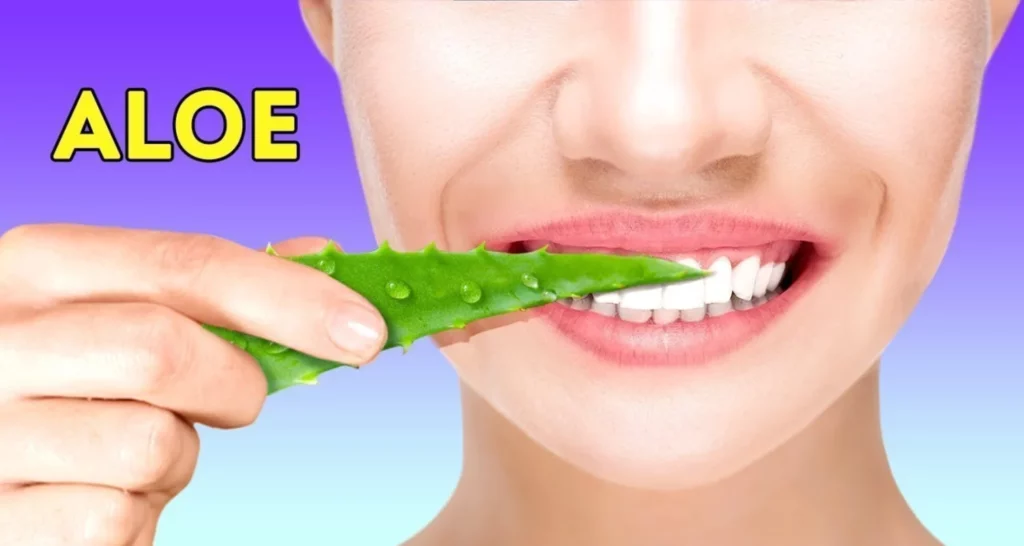
There are 4 natural remedies that can support treatment to stop gum recession, especially when it has been caused by periodontal disease.
1. Aloe Vera Gel: Aloe vera is known for its calming properties. Applying a small amount of gel to your gums can help reduce inflammation and promote healing. Its natural antibacterial properties also protect against infections.
2. Green Tea: Green tea,rich in antioxidants, can help reduce inflammation and improve gum health. Drinking a cup of unsweetened green tea a day can help heal your gums. The antioxidants in green tea fight harmful bacteria responsible for gum disease that can cause receding gums.
3. Coconut oil: Rinsing with coconut oil for 20 minutes and then rinsing with water can help reduce the load of bacteria that cause periodontal disease.
4. Eucalyptus oil: Placing eucalyptus oil on receding gums helps to stop the inflammatory process, in addition to killing the bacteria that are harmful to the gums.
How to cure receding gums: Prevention Tips
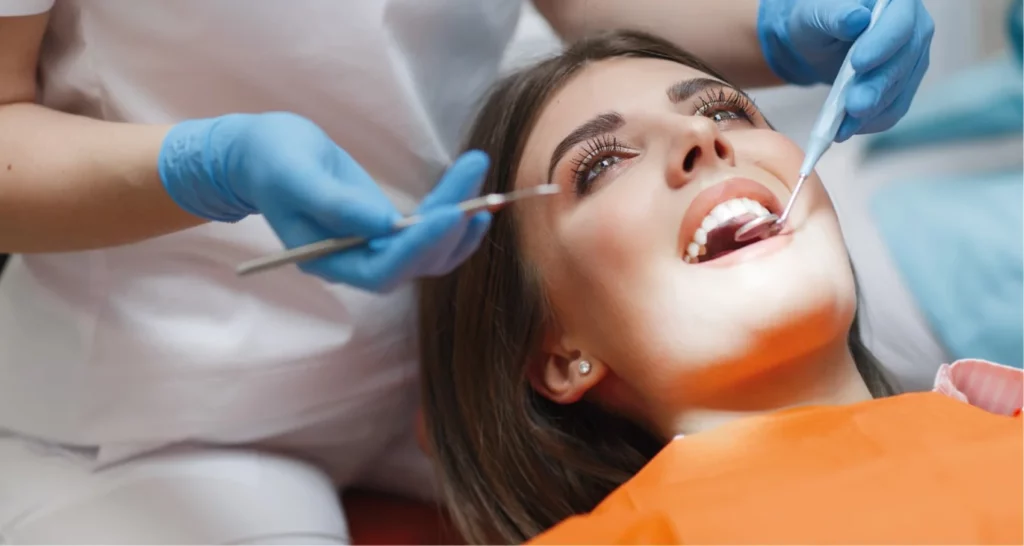
Dental Checkups Regulars
Prevention is the best strategy for gum health. Schedule regular dental checkups to detect and address gum problems early. Your dentist can provide a professional cleaning and advice on how to maintain healthy gums.
Proper Oral Hygiene
Maintaining proper oral hygiene is essential. Brush your teeth twice a day with a soft-bristled brush, floss regularly, and use an antiseptic mouthwash. These habits will keep your gums in optimal condition.
Maintain optimal gum health after Gum recession treatment
If you want to maintain your gingival health and avoid recessions after receiving periodontal treatment, follow these simple steps:
1. Follow the professional’s instructions after treatment.
2. Adopt a healthy diet, rich in vegetables and protein.
3. Avoid habits that are harmful to the health of your gums.
4. AGo to your regular check-ups to perform maintenance cleanings and detect any changes in your gums in time.
Conclusion
● Gum recession treatment is a process that requires the knowledge of a professional, but also the commitment and perseverance of the patient, to achieve optimal results.
● By understanding the oral habits that can contribute to gum recession, How to cure receding gums? exploring herbal remedies, and following prevention and maintenance tips, you can take control of your oral health.
● Remember that regular dental check-ups and a healthy lifestyle are your allies for a better result of the Gum recession treatment and preventing further gum recession.
Frequently Asked Questions
How to cure receding gums?
Proper brushing combined with the correct use of dental floss, added to regular professional dental cleanings, can help reduce and prevent the formation of bacteria in the mouth, promoting rapid recovery of the gums. It is vital to avoid brushes with very hard bristles and oral products that are very aggressive. If it’s within your reach, we recommend using a fluoride toothpaste and an electric toothbrush.
Is it possible to Gum recession treatment?
Although gums do not regenerate naturally, there is a surgical procedure that can replace damaged tissue and restore both their appearance and well-being. This process, called a gingival graft, involves taking soft tissue from a different area of the mouth and transplanting it to the affected gums.
What measures can I take to prevent my receding gums from getting worse?
If your gum recession is the result of brushing too hard, it is essential that you modify the pressure you apply when brushing and opt for a brush with delicate bristles. Maintaining a balanced diet, refraining from consuming tobacco products, and using an antimicrobial mouthwash should also help significantly reduce the risk of gums receding due to periodontal disease.
How long does it take for Gum recession treatment?
In reality, when gums recede, they do not have the ability to regenerate. However, there are treatments that can firm and revitalize the gingival tissue around the teeth. Practicing proper oral hygiene and undergoing regular dental checkups can help prevent, slow, or stop the process of gum recession.
Share:
References
1. Gum recession. (s/f). Cleveland Clinic. Retrieved October 6, 2023, from https://my.clevelandclinic.org/health/diseases/22753-gum-recession
2. Receding gums. (s/f). WebMD. Retrieved on October 6, 2023, from https://www.webmd.com/oral-health/receding_gums_causes-treatments
3. Mayo Clinic. (2021). Gum recession: What causes it and how to treat it. https://www.mayo.edu/research/clinical-trials/cls-20268653
4. American Dental Association. (2021). Gum disease. https://www.ada.org/en/~/media/ADA/Publications/Files/ADA_PatientSmart_Gum_Disease.pdf
5. Difloe-Geisert, J. C., Müller, J. S., Weiger, R., & Walter, C. (2023). Impact of oral piercings on periodontal health – A systematic review. International journal of dental hygiene, 10.1111/idh.12734. Advanced online publication. https://onlinelibrary.wiley.com/doi/10.1111/idh.12734
6. National Institute of Dental and Craniofacial Research (NIDCR). (2021). Gum disease. https://www.nidcr.nih.gov/health-info/gum-disease/more-info
7. Medical News Today. (2021). Receding gums: Treatment and prevention. https://www.medicalnewstoday.com/articles/320124
8. Frothingham, S. (May 5, 2023). Natural remedies for receding gums. Healthline. https://www.healthline.com/health/natural-remedies-for-receding-gums


